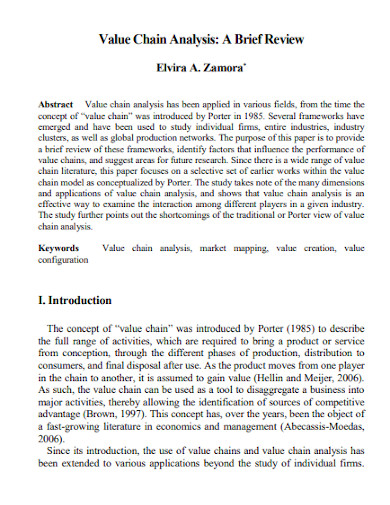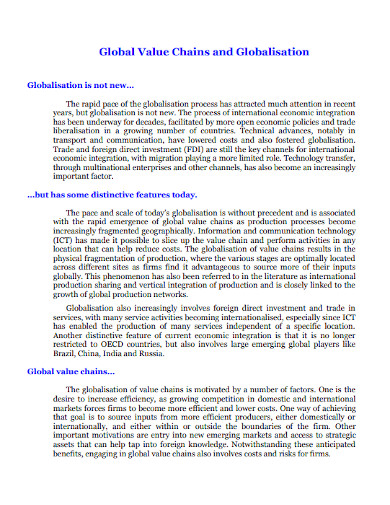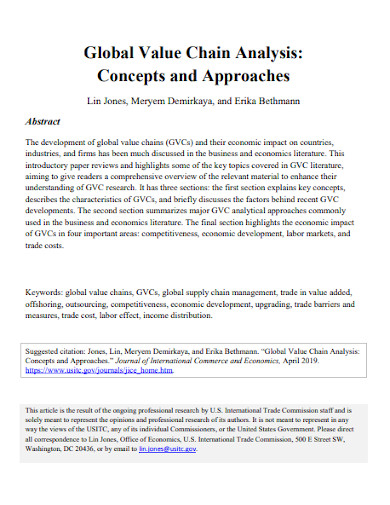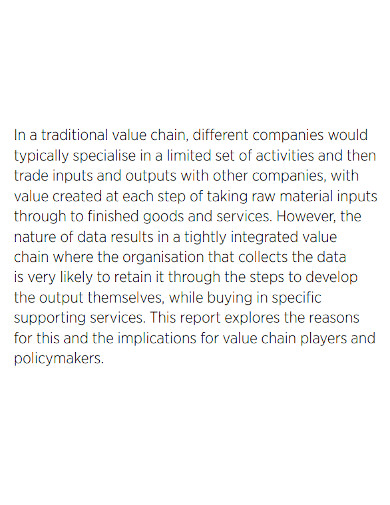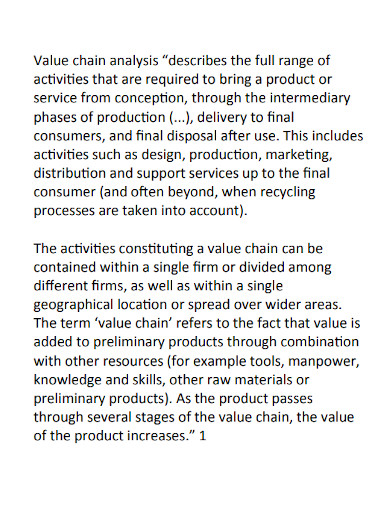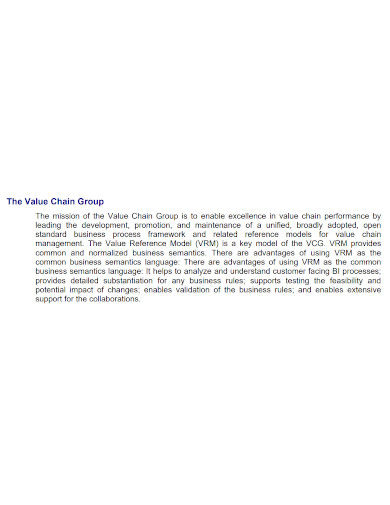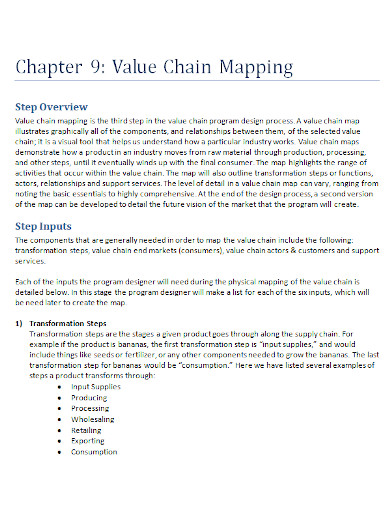Companies must constantly analyze the value they provide in maintaining competitive edge in the face of increased competition for great prices, outstanding products, and client loyalty. A value chain can assist a corporation in identifying inefficient sections of its organization and then implementing ways of improving its procedures for optimum efficiency and profitability. It’s vital for businesses to maintain customers feeling self – assured enough to remain loyal, in order to guarantee that production mechanics are seamless and effective. Value-chain analysis can also assist with this.
10+ Value Chain Samples
A value chain is a series of activities carried out by a company to generate value for its consumers. Porter created an overall value chain that businesses may use to look at all of their tasks and see how they’re linked. Because the way value chain operations are carried out determines costs and revenues, this tool can assist you in identifying the sources of value for your company.
1. Value Chain Analysis Template
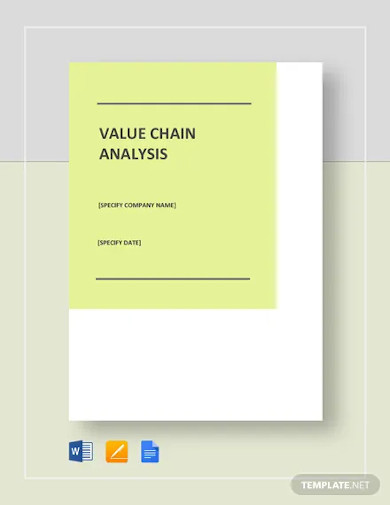
2. Assessing the Support Activities in the Value Chain
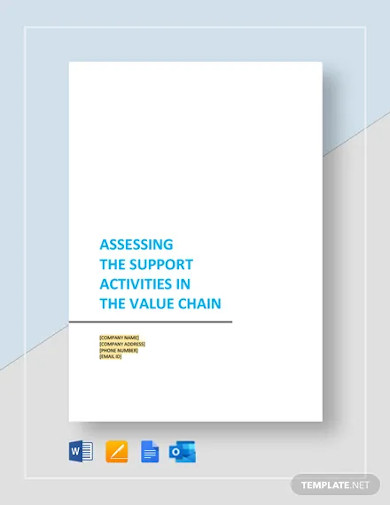
3. Assessing the Primary Activities in the Value Chain
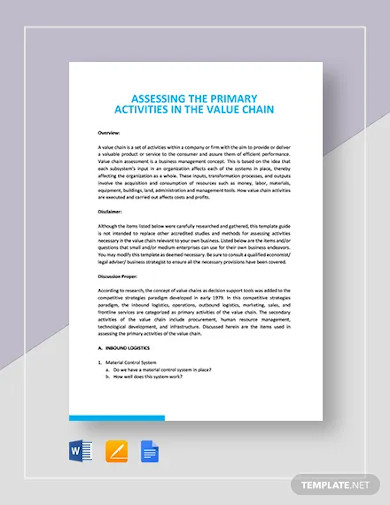
4. Value Chain and Supply Chain
5. Value Chain Analysis
6. Global Value Chain
7. Global Value Chain Analysis
8. Data Value Chain
9. Basic Value Chain
10. Value Chain Group
11. Value Chain Mapping
Components of Value Chain
Porter divides a company’s activities into two groups: “primary” and “support,” which we present below as examples of primary and support activities. Depending on the market, specific actions in each category will differ.
Primary Activities
Inbound logistics
Internally, they are all the processes that deal with receiving, storing, and disseminating inputs. Your supplier relationships are essential to generating value in this situation.
Operations
These are the operations that convert inputs into outputs that are then sold to clients. Your operational systems generate value in this area.
Outbound logistics
These operations are responsible for getting your product or service to the customer. These platforms include things like collecting, storage, and dissemination, and they might be internal or external to your company.
Marketing and sales
These are the methods you employ to persuade customers to buy from you rather than your competition. Here, the value comes from the benefits you provide and how well you explain them.
Service
These are the tasks that keep your product or service valuable to your clients after they’ve bought it.
Support Activities
These actions help to support the above-mentioned basic functions. Procurement, for example, assists operations with some activities while also assisting marketing and sales with others.
Procurement (purchasing)
This is how the organization obtains the resources it requires to function. This entails locating vendors and obtaining the best possible costs.
Human resource management
This refers to a company’s ability to recruit, hire, train, motivate, reward, and retain its employees. People are a big source of value, thus strong HR processes may provide organizations a distinct advantage.
Technological development
These operations pertain to information management and processing, as well as the safeguarding of a company’s knowledge base. Value is created by reducing information technology expenses, staying current with technological improvements, and retaining technical quality.
Infrastructure
These are the methods and processes that allow a corporation to run its day-to-day operations. Accounting, legal, administrative, and general management are all forms of critical infrastructure that firms can benefit from.
FAQs
How do you identify links?
Make links between all of the activities you’ve identified as valuable. This will take time, but the connections are critical to gaining a competitive advantage from the value chain structure. For example, there is a correlation between sales volume and sales force development (an HR investment). Another correlation exists between order turnaround times and service calls from dissatisfied customers who are waiting for deliveries.
How do manufacturing companies create value?
Manufacturing firms add value by obtaining raw resources and converting them into something usable. Retailers bring a variety of things together and present them in a way that is easy for customers, often with the help of services like fitting rooms or personal shopper guidance. Customers can also purchase plans that are insured by larger re-insurance policies.
The procedures involved in moving a product from conception to distribution, including everything in between—such as obtaining raw materials, manufacturing operations, and marketing activities—are all part of the value chain for organizations that manufacture things. A value-chain analysis is carried out by assessing the comprehensive procedures involved in each phase of a company’s operations. The goal of a value-chain analysis is to expand production performance so that a company can provide the most value for the least amount of money.
Related Posts
Sample Excuse Letter for School
Feature Writing Samples
FREE 10+ Security Guard Contract Samples in PDF | MS Word
FREE 10+ Option to Purchase Agreement Samples in MS Word | Apple Pages | PDF
FREE 26+ Curriculum Form Samples in MS Word | PDF
FREE 20+ Cleaning Service Proposal Samples in PDF | MS Word
FREE 29+ Sample Loan Application Form Templates in MS Word | PDF
FREE 10+ Event Venue Contract Samples in PDF | MS Word | Pages | Google Docs
FREE 10+ SBAR Samples in PDF | DOC
FREE 12+ Music Band Contract Templates in PDF | MS Word
FREE 10+ HVAC Maintenance Contract Samples in PDF | MS Word
FREE 10+ Social Media Marketing Contract Samples in MS Word | PDF
FREE 10+ Wholesale Assignment Contract Samples in PDF
FREE 18+ Financial Proposal Samples in PDF | MS Word | Google Docs | Pages
FREE 10+ Feasibility Study Samples in PDF


